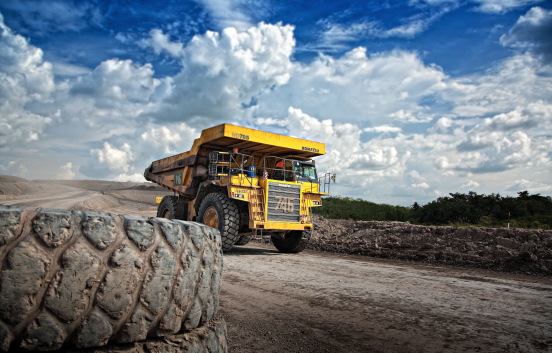(Originally published February 3, 2012)
Non-conventional fossil-fuels make up a small, but increasingly important source of available energy due to the increasing scarcity of conventional fuels. This post will look specifically at oil sands operations, with particular focus on Canadian production. Oil sands are a relatively new addition to global reserve estimates, mainly because extraction technologies have only recently made the resource economical. This paper will assess the extent of the resource, followed by a brief description of the fuel conversion processes employed to convert the natural bitumen into final products. The current state of development will be explored, as well as the energy balance associated with the conversion. A scenario for the complete utilisation of the resource will then be suggested, followed by a discussion of the environmental and social implications of development.
Extent of the Resource
While oil sands reserves can be found in about 70 countries worldwide, the largest deposits are found in Canada and Venezuela, with less significant reserves in Kazakhstan, Russia, and China. Venezuelan production has so far been uneconomical for the country as production requires high up-front capital investment. The Venezuelan climate makes extraction and processing easier and cheaper as operations are not constrained by frost and cold temperatures as in Canada, but the reserves have so far been uneconomical as the bitumen content is less than 10%. There have been small experimental operations done in the Orinoco region of Venezuela, mainly funded by International investment and United States interest. Due to the required high up-front capital investment, at the present time Canada is the only country to have a commercially viable oil sands industry.
The Canadian oil sands reserves are located in the western provinces of Alberta and Saskatchewan, with the largest and most economical deposits in north central Alberta. There are three main deposits in Alberta; the Athabasca reserve is the largest in the world, with the Cold Lake and Peace River deposits nearby. Extraction of the bitumen in this area began in 1967 using new extraction and separation technologies, producing about 30,000 barrels per day. According to Shell (2010), continuing oil sands production in Canada will require the global price of oil to remain reliably above $75 US per barrel.
Processes for Converting Fossil-Fuels into Usable Products
Open Pit/Strip Mining
Oil sands are classified as bitumen, but in their natural state they contain a mixture of sand, water, clay, and other matter. Oil sands that occur near the surface can be strip mined; a process that involves manually lifting the overburden away to access the oil sands below. This process is extremely environmentally intensive and comes at a very high economic cost. This is why the oil sands were un-economical for so long. At present, approximately 20% of the recoverable oil in the Canadian reserves can be accessed by this method. It also requires the processing of 2 tons of sand for every barrel of synthetic crude produced. According to Dillon et al. (2011), the sand and crude oil is processed using between 2.2 and 5 barrels of water for each barrel of synthetic crude and produces tailings that are highly concentrated and toxic. The walls of the tailings ponds (20m tall) are constructed out of recovered tailings sands that have been processed and reclaimed. They occupy about 170km2 of land.
In Situ
The reserves that occur below the recoverable depths for strip mining (70m) can be accessed by alternative methods known collectively as in situ development. This method has far less environmentally detrimental aspects, but the long term consequences have not thoroughly been assessed. Steam Assisted Gravity Draining (SAGD) is the most common method; however Cyclic Steam Stimulation (CSS), and Toe-to-Heel Air Injection (THAI) are frequently used depending on the geology. SAGD involves drilling as few as two wells but often many depending on the size of the reserve. One of the wells is used to extract the bitumen and the other is used to pump steam or hot air into the cavity to both increase the pressure and to raise the temperature of the oil sands which works to raise its viscosity. In so doing, the cavity reaches a pressure and temperature wherein the bitumen can then flow up through the first well and be extracted. This process is very energy intensive, requires large quantities of water, and has been known to disrupt and contaminate groundwater reserves in the process.
In Situ operations are developed in stages; the first stage requires a significant amount of steam to heat the ground near the steam injection well, while the oil production is non-existent. As the well matures and the formation absorbs and retains more heat, the steam required to produce oil is decreased. Once the chamber is sufficiently heated, the amount of energy needed decreases considerably.
Upgrading
Once the bitumen has been removed, either by strip mining or in situ devlopment, it must then be processed to remove the sand, clay and other minerals and then converted to useful hydrocarbons; a process known as upgrading. This process has four steps: coking or “cracking”, catalytic conversion, distillation or “frac-ing”, and hydro-treating.
Because bitumen has a relatively high carbon to hydrogen ratio (as compared to conventional crude oil), it is necessary to either remove some of the carbon or add some hydrogen during this process. In the coking phase the hydrocarbons are heated quickly which breaks apart the long, complex hydrocarbons into smaller molecules. In this process, carbon is converted to coke and removed from the reaction. This excess coke is then used to fuel the cracking reaction.
An alternative method known as catalytic conversion involves using a catalyst to help the reaction take place. When the large hydrocarbons contact the surface of the catalyst they break down into smaller molecules. This process also works to filter the smaller hydrocarbons out and continue cracking the larger ones. During this process hydrogen can be added to produce lighter hydrocarbons rather than removing carbon and dealing with the excess coke – a process known as hydro-processing.
The bitumen hydrocarbons must then be distilled in a fractionating tower or “frac-tower” to sort the gasses and liquids into their constituent parts. These different elements boil off at different temperatures, and within the fractioning tower the temperature varies with the hottest temperatures at the bottom and the cooler temperatures at the top. This configuration works to separate light and heavy hydrocarbons, as the lightest hydrocarbons vaporize and travel to the top of the tower while the heavier hydrocarbons boil at a higher temperature and collect near the bottom of the tower as liquids. Each level of gas vapour condenses into light and heavy oils, kerosene, and naptha.
The last phase of upgrading is hydro-treating. The products collected from the distillation process are then mixed with hydrogen and heated to temperatures around 300-400C. They flow through different towers depending on their densities, and catalytic pellets are added to aid in the process. This process works to stabilize the synthetic crude oil by adding hydrogen to some of the unstable molecules that otherwise would continue to change composition prior to refining. This step also works to reduce some of the impurities and lower the sulphur content in the hydrocarbon molecules.
Refining
During the refining process, the synthetic crude is then heated which again separates the hydrocarbons off at different temperatures in a fractioning tower. The lighter hydrocarbons are in higher demand, and so many of the heavier hydrocarbons are cracked to form lighter molecules. Once processed, the fuels and lubricants can be sold as final products.
Synthetic crude derived from oil sands is very low in sulphur and other impurities, generally defined as “sweet”, which makes it easier to refine and minimizes some of the environmental concerns with emissions. Prior to upgrading it often contains high level of sulphur and sour gas (H2S). Once removed, the sulphur is stockpiled and later used for many industrial processes.
Current State of Development
The technologies used in almost all aspects of oil sands operations are in a constant state of change. Because of the financial recession of 2008, there has been considerable investor interest to lower operating costs and reduce the break-even cost to increase the competitiveness of the resource. This has led to great innovations in mining and processing, which have increased the recovery rate and the estimated reserve size. The most recent advances in the development of the technology have been in tailings management, in situ extraction, and in carbon sequestration.
Tailings Management
The upgrading process in oil sands mining involves the removal of large amounts of sand and residues. Through this process, a large amount of water is used to separate the leftover materials from the bitumen and is then deposited into tailings ponds. Developments in tailings management have focused on minimizing tailings through different processing techniques, and new methods to reclaim the tailings ponds after use. The majority of tailings come from open pit mining; the bitumen is manually removed from the mine site without separation from the sands and minerals, which then must be processed to separate the bitumen out. Innovations in processing have both reduced the amount of water needed and have increased the recycling of that water to be reused in the process. The reclamation process has been late to develop, which has led to a surplus of ponds to process. Currently there has been only one successful reclamation attempt in 43 years; Suncor successfully reclaimed a 220 hectare storage pond in September of 2010. Alternative methods have been assessed, including the creation of “pit lakes” wherein the tailings will be pumped into exhausted mine sites to create large lakes. The toxic tailings will then be covered by a layer of fresh water which will not mix with the tailings and will effectively create a cap over it. This method is not yet tested and is highly controversial.
In Situ Development & Carbon Sequestration
With the invention of directional drilling, a technique used to drill wells both vertically as well as horizontally; in situ mining has become the most profitable process of mining in most of the area. This has led to a variety of methods for in situ extraction, depending on both geological and geographic properties. It has also led to techniques that can be tailored for each deposit which increases the recovery rate and reduces the overall cost. The in situ method involves increasing the temperature and pressure of the cavity to reduce the viscosity of the bitumen to be fluid enough for extraction, and this has led to experimentation with carbon capture and storage (CCS) techniques to reduce the carbon emissions. Carbon capture and storage, also called carbon sequestration, is a new technology that has received considerable interest lately, due in part to speculation of future carbon taxation and trading. The prospects for CCS have a unique advantage in in situ development as CO2can be used in accordance with steam/air injection into the formation. This has been done in some experimental settings; however it is still not a viable technology on the commercial level.
Energy Balance Associated with this Conversion
In order to assess the feasibility of different methods of fossil fuel production, it is useful to calculate the energy balance of the process. This involves calculating the amount of energy produced for a given input of energy, often called energy returned on energy invested (EROEI). For some technologies this can be easy to calculate, but because of the complexity of the oil sands extraction and upgrading processes this can be very hard to calculate, especially because the source of the energy for much of the processing comes directly from the resource rather than from energy available to the rest of society.
Professor Charles Hall, of the SUNY College of Environmental Science and Forestry, has calculated the EROEI for non-conventional oil sources including the oil sands and has created a formula that accounts for direct and indirect energy inputs, as well as labour and environmental energy inputs.
The direct energy input is a measure of the energy content of the fuels used in the process, but is not a measure of the total primary energy used. The factor for the direct energy input used was the energy content of diesel fuel, while the indirect energy parameter included the capital costs per barrel of oil equivalent (BOE). The labour and environmental energy inputs were used to incorporate the externalities of production that so far have been un-priced. The labour input includes only the maintenance of the facilities and the direct labour associated with the production, while the environmental inputs are calculated by using the Kyoto protocol CO2 emissions trading cost per BOE. The results from Professor Hall’s calculations depend most heavily on the direct energy input as it is the most energy intensive input in the equation. If only the direct energy input is used the EROEI works out to be about 5.8:1. If the indirect energy inputs are included, the EROEI falls to about 5.2:1. Adding the labour and environmental costs to the equation have little effect on the final energy balance, mainly because the costs for these inputs generally remain un-priced and unknown.
An average of about 5:1 can be estimated from these values which is comparable to other calculations of energy balance for oil sands production, which means that one barrel of oil equivalent spent yields approximately 5 barrels of synthetic crude. This estimate remains fairly high because the labour and environmental inputs are hard to account for, if these externalities were adequately priced the energy balance would be much smaller. Further EROEI figures for oil sands projects are rare because it is difficult for companies to calculate it. This is mainly due to the diversity of extraction methods and is dependent on the type of upgrading which then depends on the properties of the bitumen.
Scenarios for the Complete Utilization of the Resource
Current estimates of recoverable oil in the Canadian oil sands remain steady around 170 billion barrels, and the current rate of extraction is about 1.4 million barrels of oil per day. Canada’s National Energy Board suggests that, given relatively static oil prices, production could reach (on average) 4 million barrels per day. This assumes that the inputs for production will remain constant, but at the current level of production the energy inputs are already becoming stretched. In situ developments require vast amounts of both water and energy, and while water is believed to remain relatively inexpensive and plentiful in the region, the energy needed is becoming hard to find. Currently in situ methods rely on natural gas to create the steam needed, but if oil sands energy demand rises further, natural gas will need to be replaced or supplemented with alternative forms to satisfy the increase in demand. Proposals have been made to use the product (bitumen) to fuel the exploitation of the product, but this conflicts heavily with Canada’s Kyoto targets and environmental standards. Other proposals suggest building large nuclear reactors to supply the steam for in situ mining, effectively fuelling a dirty and non-renewable fuel source with a “clean” source. Currently, a large majority of the synthetic crude produced is piped to the United States, but prospects for a major pipeline to the pacific (the Enbridge Northern Gateway Pipeline) is in the final stages which will open up an entirely new market for the resource. In the last decade there has been increased interest, especially by China, in the synthetic crude from Alberta. If the pipeline is completed there will be even greater demand which will drive the production up further. If production of the oil sands increases, the production costs as well as the environmental costs will likely rise, making the resource more expensive and potentially reducing its overall competitiveness in the market.
Another factor to consider is the effect of “creaming”, which describes the act of taking the cream off the top first. This is a common practise with all resource extraction industries, it is a way to maximise profits by reducing production costs. If this is accounted for then the recoverability of the remaining deposits will decrease as time goes on. More realistic estimates of future oil sands production assume rising costs, the creaming effect, and public pressure will likely limit the output to around 3 million barrels per day sometime between 2015 and 2020. These estimates are dependent on technologies that are still developing which may change in the future.
How will this affect the World?
It is important to analyse the effects of the production of this resource in both social and environmental contexts. The physical effects to the environmental landscape are well known and, due to the size of the development, not easy to disguise. The social landscapes however, are a story not often told, and all too often ignored. Part of the problem is the lag time between development of the resource, and the development of social problems.
Environment
Corridors & Edge-Effect
Seismic lines and pipe-lines create linear corridors which affect the movement and distribution of many wildlife species. In Alberta, woodland caribou populations have declined significantly in response to anthropogenic development of wild areas, especially the creation of corridors for infrastructure development. The work by James et al. (2000) evaluating the predator-prey relationship of wolves and woodland caribou, indicated that these linear corridors are extremely long and straight strips of open land with long sight-lines which is changing the predator-prey relationship. Wolves naturally prey on woodland caribou, but the frequency and magnitude of predation along with the extent of wolf range is increasing due to infrastructure development. Wolves avoid open areas and roads; however, corridors that see little human activity become easy travel routes and areas for hunting. Caribou, like many wild species, generally avoid clearings but with the increasing frequency of infrastructure corridors fragmenting natural habitat, many species are forced to cross more open clearings that they would otherwise have avoided. The creation of corridors through forested areas also dramatically increases the interface zone of open and closed canopies, a phenomenon known as “the edge effect”. This effect has negative implications with regard to natural species diversity (especially shade tolerant vegetation) and increases tree mortality through reduced wind firmness and blow-down. According to the work by Luken et al. (1991), the consequences of the edge effect can radiate up to 15 meters into the standing natural forest, widening the footprint considerably.
Reclamation
Because of the oil sands development of the landscape, the ground and surface hydrology is rerouted wherein whole wetlands and creeks disappear or move, the soil chemistry is changed to a point that native species won’t grow without annual fertilization, and whole boreal ecosystems are removed (OSVRC. 1998). The current remediation tactics use the same reclamation standards that the forestry industry uses, but this standard is based on the assumption that the ecosystem occupying the site after the disturbance will be similar to what it was prior. Because open pit mining alters the whole landscape, the silvicultural prescription will not necessarily equate to what remains after extraction. This means the peatlands removed for development will, at best, be returned to marshes or swamps which don’t support the biodiversity or carbon storage that the peatlands previously did. The reclamation procedure also relies on harvesting organic soils and peat from offsite locations to mix with the replaced top soil, to create a suitable growth medium. The Oil Sands Vegetation Reclamation Committee (1998) indicate that, while this method is “noteworthy because native seeds and root fragments transferred with the soil became established and grew rapidly on the reclamation sites”, it further expands the “footprint” of the operation and relies on fragile ecosystems to provide another resource to supplement the damages driven by fossil fuel consumption, which in turn releases more carbon previously stored in the frozen organics within the peatland permafrost.
Surface & Groundwater
Groundwater contamination is another serious concern in northern Alberta, as most of the oil sands development occurs within the Athabasca watershed. Due to past neglect, standards and guidelines have had to be re-written to incorporate this mega-project. One of the more risky aspects of development is in the in situ mining as the steam that is injected into the formation must be carefully monitored to regulate the pressure that the formation is subjected to. As has happened in the early stages of the technologies development, pressures exceeding the upper limits can cause the shallow crust above the rupture, which has serious implications with groundwater storage and movement. Generally, the risk of this event is dependent on the local geology and significant advances have been made to determine the optimal injection rate.
Based on the Alberta Environment, Dillon et al. (2011) report, the oil sands withdrawbetween 2.2 and 5 barrels of fresh water to produce each barrel of synthetic crude. In situ development, however uses on average 0.5 barrels of water per barrel of synthetic crude produced. The amount of fresh water permitted to be withdrawn from the Athabasca River is less than 3% of the average annual flow.
Surface water contamination has been a topic of hot discussion in the last few years, due in part to several alarming reports that suggested higher than previously reported contamination. The most notable case was the paper by Kelly et al. (2008), which stated that oil sands development is a significantly greater source of contaminants that previously recognised. These findings significantly questioned the impartiality and ethical implications of provincial monitoring committees. There has been significant work done in recent times and a federal review has been undertaken to settle the discrepancies of the findings. Dillon et al. (2011) suggest that one of the major sources of trouble in these calculations is the scarcity of information, and the difficulty in establishing natural historical background levels. Development in the area has been ongoing for over 40 years, while water quality assessments are rather new. Further, and possibly more important, because the deposits naturally occur relatively close to the surface (and historically they were found on the surface), the natural levels of hydrocarbons are significantly higher than most ecosystems. This makes it very difficult to attribute the increases in contaminants to oil sands development activities.
Emissions & H2S
As part of the G8 Summit, Canada has pledged to reduce total emissions to a level that will prevent a global average rise in temperature of 2°C, relative to pre-industrial levels. In order for Canada to do this, the Pembina Institute (2010) states that they will need to cut emissions by 80% from 1990 levels by the year 2050, which will entail a carbon reduction to 118million tonnes by 2050. At present, this equates to the emissions from agriculture and residential heating alone. The report by the Pembina Institute (2010: p. 9) also noted that “In 2008, oil sands plants and up-graders were already producing 37 million tonnes of emissions per year, which alone accounted for five per cent of Canada’s total emissions”. To further this point, projections of growth in development suggest that emissions could come close to tripling by 2020 to 108 million tonnes of CO2 equivalent per annum which would leave almost no room for emissions for the rest of the G8 budget. The federal government has opted to regulate emissions based on each sector, and given the likelihood of oil sands expansion, reductions in emissions will need to be met by other sectors and the rest of the country. This has already created tension between the large population in eastern Canada and the relatively small population in the west, regarding distribution of pollution/emissions as well as the distribution of wealth/income that is generated from the development.
As mentioned above, the sulphur content of oil sands bitumen is quite high, and much of this is in the form of hydrogen sulphide (H2S). Also called “sour gas”, hydrogen sulphide is an extremely dangerous material that is odourless, colourless, and toxic to humans. It is especially dangerous as it is heavier than oxygen and tends to pool or concentrate in low areas. It is also very corrosive and creates problems is the processing stages. The solution has been to either burn it off using flare stacks (either at the well site or at upgrading) or alternatively it is chemically treated and removed during the upgrading process. Removal during processing is favoured as it reduces the overall emissions and creates a by-product (elemental sulphur) which can then be sold to other industries for production of products like fertilizer and gunpowder.
Social Structure
Income Distribution
A significant amount of research has gone in to the study of inequality and social justice. Although much of this work has been based on racial and ethnic inequalities within less developed nations, Goesling (2001), found that the level of total inequality between nations has significantly stabilized and may have actually declined in the last two decades. In developed nations there exists a third type of inequality based on socioeconomic class. Despite Goesling’s trend, the level of socioeconomic inequality in North America has grown rapidly in recent times. As Harper & Fletcher (2008) note, this widening of social class has given rise to a widening of consumption levels and an unequal distribution of environmental consequences. The rich can choose to distance themselves from areas of increased pollution, while the poor are more inclined to accept these terms, given the lower cost of living in such reduced living standards.
In Northern Alberta this has become a major problem. A substantial proportion of the population of northern Alberta is of First-Nation origin, which brings up issues of ethnic justice. The Oil Sands Developers Group (2010) report shows that in 2009, oil sands companies provided $10.6 million to support First-Nation communities alone, however this says little about the allocation and distribution of those funds.
indigenous Communities
Hessing et al. (2005) propose that the ongoing racial segregation of Indigenous communities into reserves, and the statistically lower standard of living and employment figures of these areas, has created communities that lack the political power to oppose developments like the Oil Sands. They are also more inclined to accept the long-term social and health costs in exchange for employment prospects. Hessing et al. (2005: p.43) suggest this as a form of environmental racism, as individuals are discriminated against “either directly or indirectly through their exposure to environmental hazards”. There are also issues of loss of culture, as First-Nation communities are exceptionally connected to the environment.
Conclusion
The rate of oil sands extraction is driven by market demand and, with an increasing population using more energy, the demand is likely to keep going up. The current political structure has maintained a system that fails to account for the true economic and social consequences of this development, which allows the cost of production to remain below its fundamental level. Considering the advances in in situ development, production will likely be constrained by limits to inputs, rather than output. The current energy balance of about 5:1 makes the resource competitive, given a relatively stable oil price above $75 US per barrel, however; this energy balance relies upon geological and geographic factors that will influence further development as the easy reserves are used up. Finally, if Canada intends to get serious with its emissions standards, the prospects of continued development will be critically challenged. Considering cumulative environmental, social, and economic costs, the viability of further development becomes seriously questioned.
Literature Cited
Dillon, P., Dixon, G., Driscoll, C., Giesy, J., Hurlbert, S., Nriagu, J. (2011). Evaluation of Four Reports on Contamination of the Athabasca River System by Oil Sands Operations. Water Monitoring Data Review Committee.
Goesling, B. (2001). Changing Income Inequalities Within and Between Nations: New Evidence. American Sociological Review, 66, 745-761.
Harper, C., & Fletcher, T. (2008). Environment and society: Human perspectives on environmental issues (Canadian ed.). Toronto, Pearson Canada Inc.
Hessing, M., Howlett, M., Summerville, T. (2005). Canadian natural resource and environmental policy: Political economy and public policy. Vancouver, UBC Press.
James, A., Smith, K. (2000). Distribution of Caribou and Wolves in Relation to Linear Corridors. The Journal of Wildlife Management, 64.1, 154-159.
Kelly, E., Short, J., Shindler, D., Hodson, P., Ma, M., Kwan, A., Fortin, B. (2009). Oil Sands Development Contributes Polycyclic Aromatic Compounds to the Athabasca River and its Tributaries. Proceedings of the National Academy of Science, 105:52, 22346-22351
Luken, J., Hinton, A., Baker, D. (1991). Forest Edges Associated with Power-Line
Corridors and Implications for Corridor Siting. Landscape and Urban Planning, 20.0, 315-324.
Oil Sands Developers Group. (2010). Aboriginal Peoples and Oil Sands Development. Available From: http://www.oilsandsdevelopers.ca/index.php/library/
Oil Sands Vegetation Reclamation Committee. (1998). Guidelines for Reclamation to Forest Vegetation in the Athabasca Oil Sands Region. Edmonton, Alberta Environmental Protection.
Pembina Institute. (2010). Duty Calls: Federal Responsibility in Canada’s Oil Sands. Environmental Defence, The Pembina Institute Publications.
Shell. (2010). Report on Royal Dutch Shell PLC & Oil Sands. Available From: http://www.static.shell.com/static/investor/downloads/news_and_library/report_royaldutchshell_oil_sands_march2010.pdf





